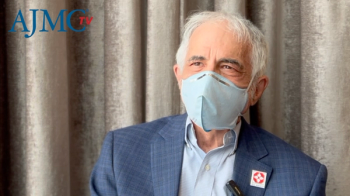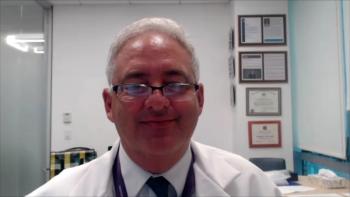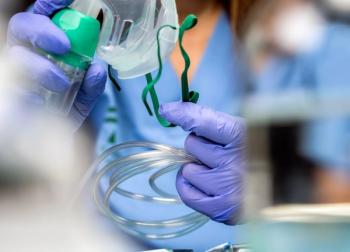
Further Study Needed to Evaluate Olfaction Recovery in CRSwNP
This new study evaluated outcomes following add-on dupilumab to treat severe uncontrolled chronic rhinosinusitis with nasal polyps (CRSwNP).
Dupilumab was shown to improve olfaction impairment (OI) in patients with severe uncontrolled
“Clinical trials and real-life data have already demonstrated the effects of dupilumab vs placebo on the recovery of olfaction,” the authors wrote, “whereas what is still not clear is the mechanism of OI in CRSwNP and the physiopathological characteristics underlying the olfactory recovery
after treatment.”
Results of the retrospective, real-life, observational study were
Patients undergoing dupilumab treatment for severe uncontrolled CRSwNP (N = 53; mean [SD] age, 53.07 [12.74] years; 62.2%, male patients) were identified through their records from the ENT Department of University Federico II and Cardarelli Hospital of Naples, in Italy. Global Initiative for Asthma guidelines were used to diagnose asthma—it being a principal comorbidity of CRSwNP—and European Position Paper on Rhinosinusitis and Nasal Polyps to diagnose CRSwNP.
There were 3 study visits, at baseline and 3 and 6 months after dupilumab was added to current intranasal steroid treatment, during which patients were evaluated via the Sinonasal Outcome Test (SNOT-22) for health-related quality of life (HRQOL), nasal endoscopy for polyp size, and the Visual Analogue Scale (VAS) scale and the Sniffin Sticks-16 items identification test (SS-I) for OI and sense of smell.
Among the study cohort, 74% reported allergies; 70%, asthma; and 28%, more than 2 surgeries to treat their CRSwNP. Following administration of daily dupilumab through 100 mg add-on therapy to mometasone furoato nasal spray, after the 24-week observation period, the following results were seen:
- SNOT-22 score improved to 16.2 (12.5) from 55.6 (15) after 3 months (P = .0001)
- SNOT-22 score was maintained at 6 months: 15.9 (9.8) (P > .05)
- VAS score improved to 2.5 (2.2) from 7.8 (2.5) after 3 months (P = .0001)
- VAS score was maintained at 6 months: 2.3 (2.1) (P > .05)
- Nasal polyps score (NPS) saw 2 significant drops from 5.8 (0.9) at baseline (both P = .0001):
- To 3.2 (1.2) at 3 months
- To 1.6 (1.1) at 6 months
- SS-I saw 2 significant improvements from 8.3 (3.6) at baseline (both P = .0001):
- To 11.5 (3.1) at 3 months
- To 11.9 (3.7) at 6 months
Significant correlations were also seen between VAS score and SS-1 and between SNOT-22 and VAS at the 3 study visits following dupilumab therapy, but not between overall SNOT-22 and SS-1 or NPS and SS-1 or VAS. However, correlations were seen between decreased sense of smell/taste and frustration/restlessness/irritability from SNOT-22 and SS-I at baseline.
The study authors highlight that because OI is so difficult to treat in CRSwNP with standard therapy, it deserves extra attention through research and ENT specialists being up-to-date on tools to diagnose the condition. They also note that previous findings show dupilumab’s benefit in improving OI.
Their findings, they emphasize, show improvement in olfactory function and HRQOL with the addition of dupilumab, but because this varied according to the scale used—for example, improvement was shown to be higher via VAS score than SS-I—the authors said the study participants may not completely comprehend the degree of their OI and that they may have overestimated its improvement because of that. In addition, they saw that OI improvement was not based on polyp volume and might solely be related to inflammation reduction.
“The current study findings should be interpreted considering some methodological limitations,” the authors concluded. “We encourage future studies to investigate whether dupilumab’s recovery of olfaction in CRSwNP patients may be primarily dependent on anti-inflammatory effects. Future studies that include biomarkers could be useful to clarify this aspect.”
Reference
Cantone E, De Croso E, Ricciardiello F, et al. Olfaction recovery following dupilumab is independent of nasal polyp reduction in CRSwNP. J Pers Med. Published online July 26, 2022.doi:10.3390/jpm12081215
Newsletter
Stay ahead of policy, cost, and value—subscribe to AJMC for expert insights at the intersection of clinical care and health economics.

















































